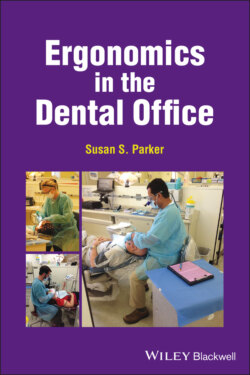Читать книгу Ergonomics in the Dental Office - Susan S. Parker - Страница 5
Оглавление
Preface
Occupational musculoskeletal disorders (MSDs) are a significant health and safety problem facing most workforces today. The basic cause of these MSDs is exposure to risk factors to the worker. When a worker is exposed to MSD risk factors, their body begins to tire and thus becomes fatigued. When the fatigue outruns the body’s recovery system, a musculoskeletal imbalance happens to that body. Sometimes the worker has no indication that there is a problem developing. This sounds like it should be simple to change. However, the human body and the various styles of work that individuals do require some knowledge about the body and its various muscle groups to keep these musculoskeletal pains from developing.
One such occupation that is really physically tough on the human body is dentistry. Dental health providers are at an increased risk of work‐related stress and musculoskeletal discomfort by the very nature of their daily work. In spite of different working patterns, there are parallel levels of symptoms in dentists and dental hygienists across nations. There are several links on the internet and journal articles addressing various ergonomic issues. However, there is a need for a more specific source of information for the entire dental health team that can be easily accessed and understood. Risk factors for MSDs are multifactorial. Therefore, the goal of this short book is to describe the causes of the musculoskeletal problems that might be occurring daily in the dental office and that we might have no idea are occurring, and to outline solutions to them. Symptoms appear very early in some dental careers, with a surprisingly higher prevalence of MSDs found in educational training.
The book aims to be easily accessible and to address specific ergonomic issues that might arise for dental practitioners in the operatory or working environment in the dental office. This information should be able to enlighten anyone who might need help in understanding how the body can be misused and the importance of ergonomics in most if not all walks of life. The desired outcome is a comprehensive strategy for mitigation and an integration of practices to reduce most ergonomic risks, in order to achieve amelioration in workplace ergonomics for employee health and safety. Efforts to address this problem for all dental professionals need to take an interdisciplinary, progressive approach. Prevention is better than treatment. Though no one can go back and make a brand new start, anyone can start from where they are and create a brand new ending. Let us begin now to appreciate our miraculous body and its human engineering.
As Mahatma Gandhi said, “The future depends on what you do today.”
